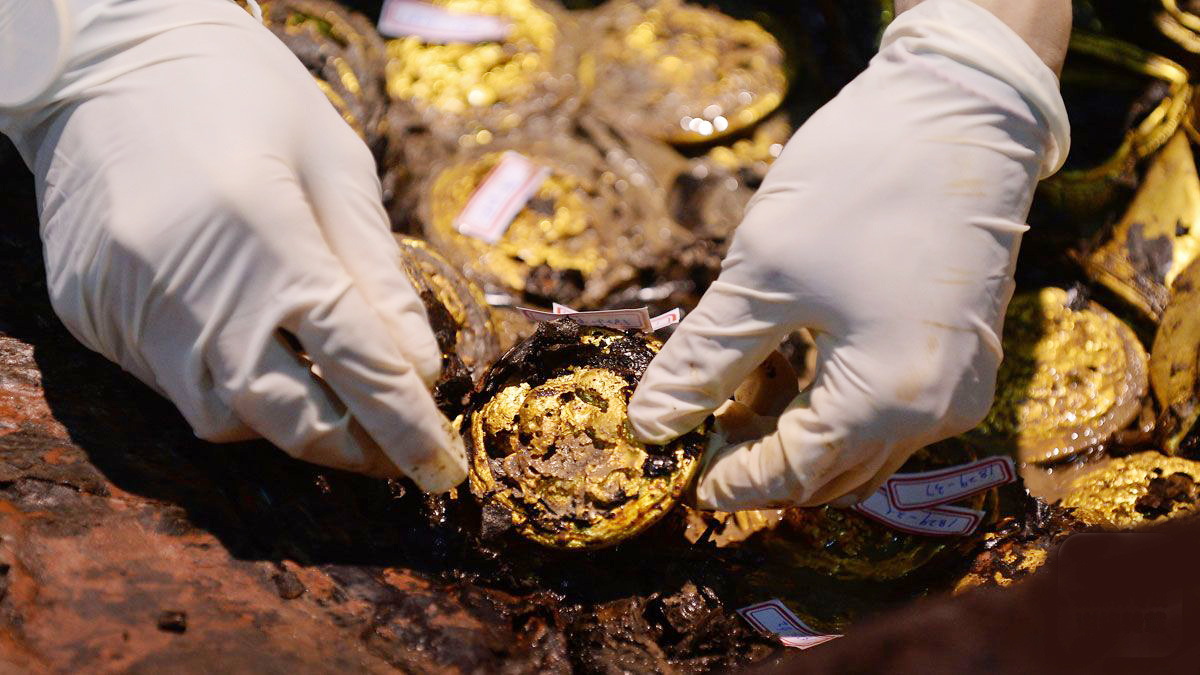Haihun Hou tomb excavation yields unprecedented number of treasures

Cake-shaped gold pieces unearthed from the Haihun Hou tomb
Setting a new record for the excavation of Han dynasty tombs, a total of more than 10,000 artifacts have been found in the Haihun Hou cemetery in East China's Jiangxi province, a press conference announced on Oct. 9.
The release signals the completion of more than five years of excavation, said Chi Hong, head of Jiangxi’s Department of Culture. The tomb belongs to Liu He who was given the title "Haihun Hou," meaning Marquis of Haihun, after he was deposed as emperor.
The site, located near Nanchang City, capital of Jiangxi Province, is the best-preserved cemetery from that period in China. It features the most complete structure, layout and sacrificial system. A wide variety of artifacts has been unearthed, including bronze, golden, silverware and jade objects as well as bamboo slips and wooden tablets.
Conservation work continues, Chi said. “Archeologists and conservation experts are cleaning the mud stuck on relics 2,000 years ago to obtain historical information as much as possible while restoring broken ceramics and bronze to display more cultural relics for the public.”
Chi said the body remains of Liu He were found in the inner coffin, and gilded lacquer boxes were buried with him. His teeth still remain intact. His head and abdomen were resting on a bed of jade while several jade artifacts of different sizes, including a jade sword and other valuables, could also be found. There is a jade seal inscribed with the name of Liu He in the waist. Liu lies on a mat made of glaze sheets strung together with golden thread, and there are 100 cake-shaped gold pieces underneath.
The Haihun Hou tomb houses nearly 500 gold vessels, which exceeds the number found at any other Chinese site, Chi said. In addition, experts analyzed the gilded boxes using X-ray imaging techniques to discover various ornaments, such as carnelian beads, jade slips and bronze plaques.
Progress has also been made in extracting bamboo scripts, Chi said. Through careful protection and extraction, archaeologists have succeeded in sorting more than 5,000 bamboo slips. Indecipherable handwriting has been made legible using infrared scanning. Scraps of ancient texts, including the Analects of Confucius and the Book of Rites, have been discovered after preliminary analysis of the writing.
Chi said further conservation, cleaning and scanning of bamboo scripts will be immediately undertaken. Preliminary protection and extraction is projected to be completed by the end of this year, while the process of interpretation and research will begin next year.
According to historical records, inheritance of the title of Haihun Hou lasted four generations. The first Haihun Hou Liu He, grandson of Emperor Wu, led a legendary life of ups and downs. Originally King of Changyi, he was installed by a powerful minister as emperor but deposed after ruling for only 27 days. He lost his original kingdom of Changyi and was demoted to the rank of marquis. The shortest-reigning monarch in Han Dynasty, he was known as the “Dethroned” Emperor.
